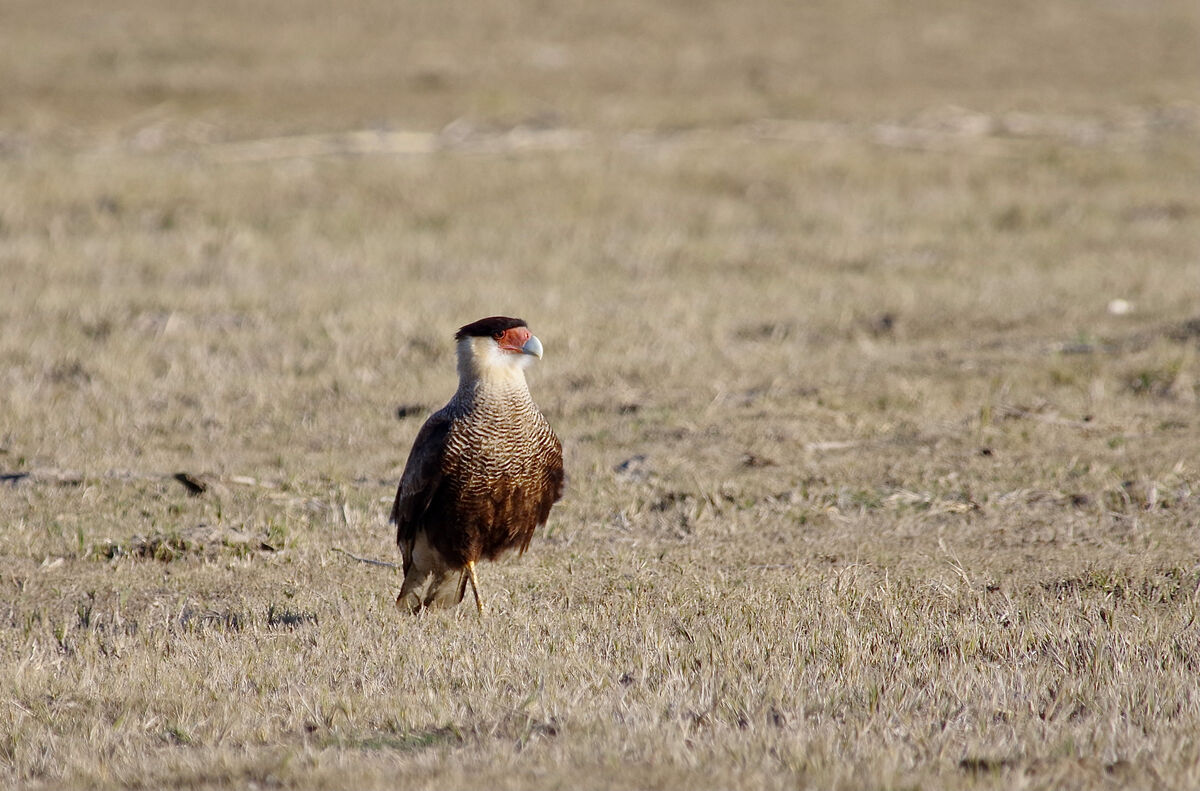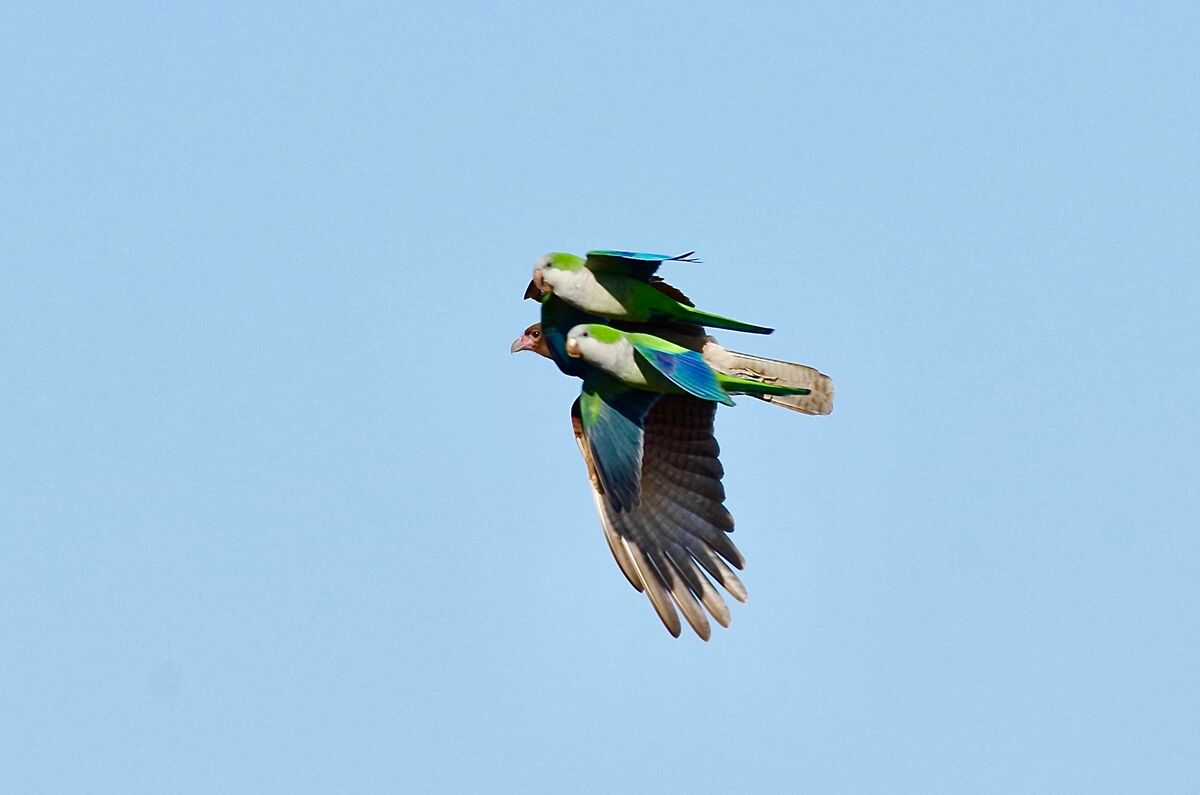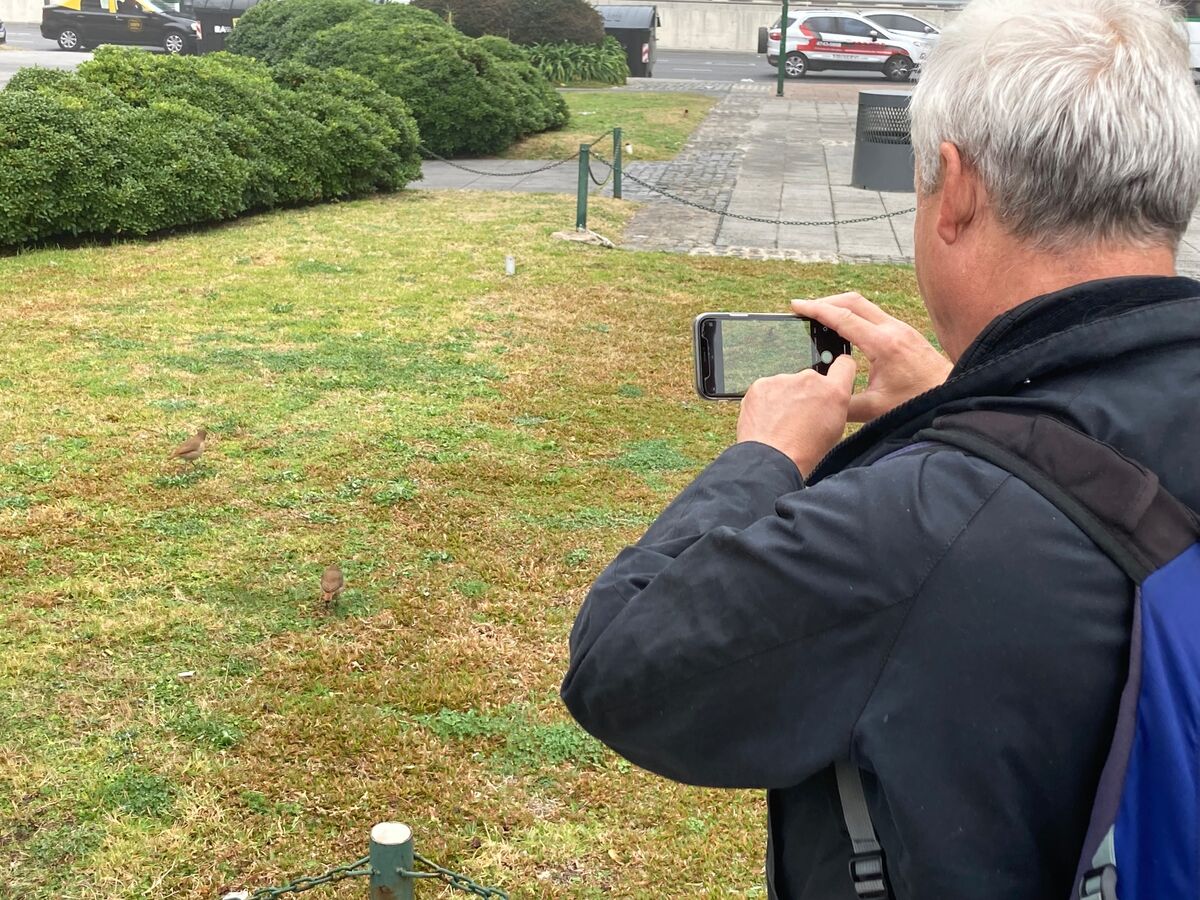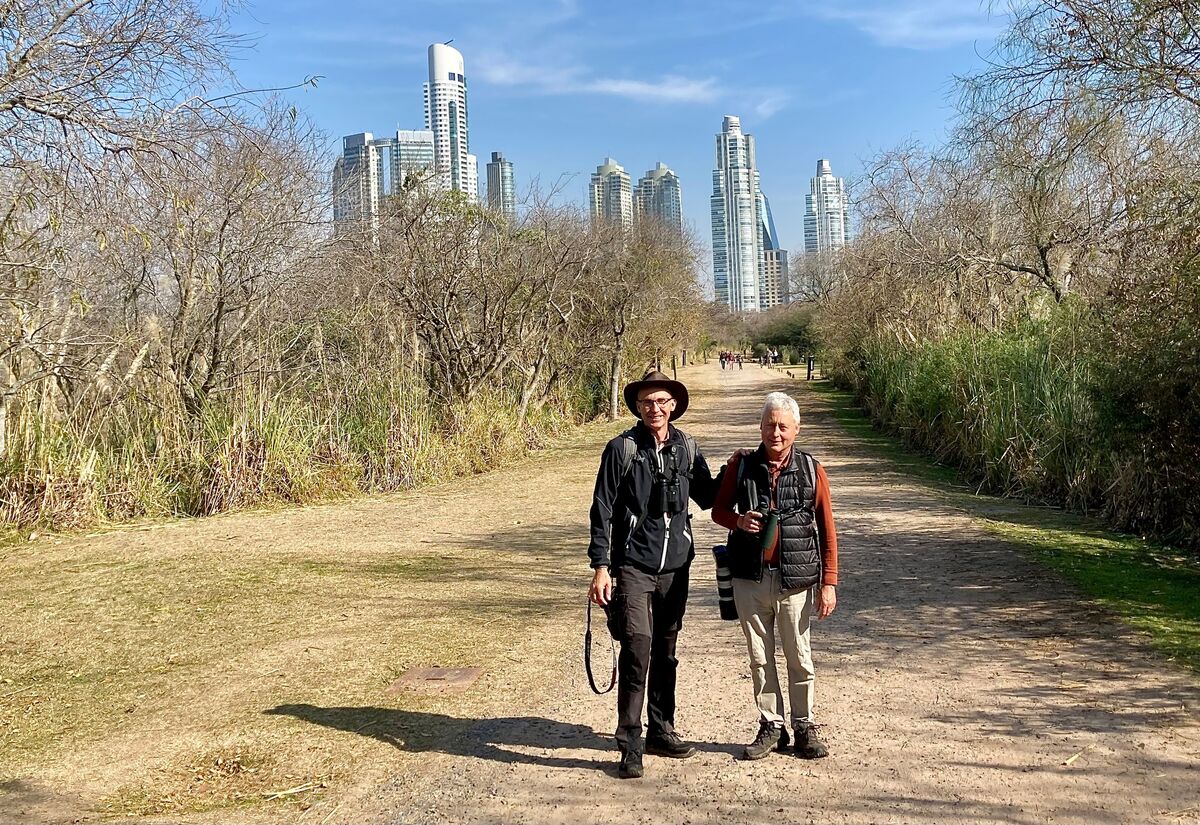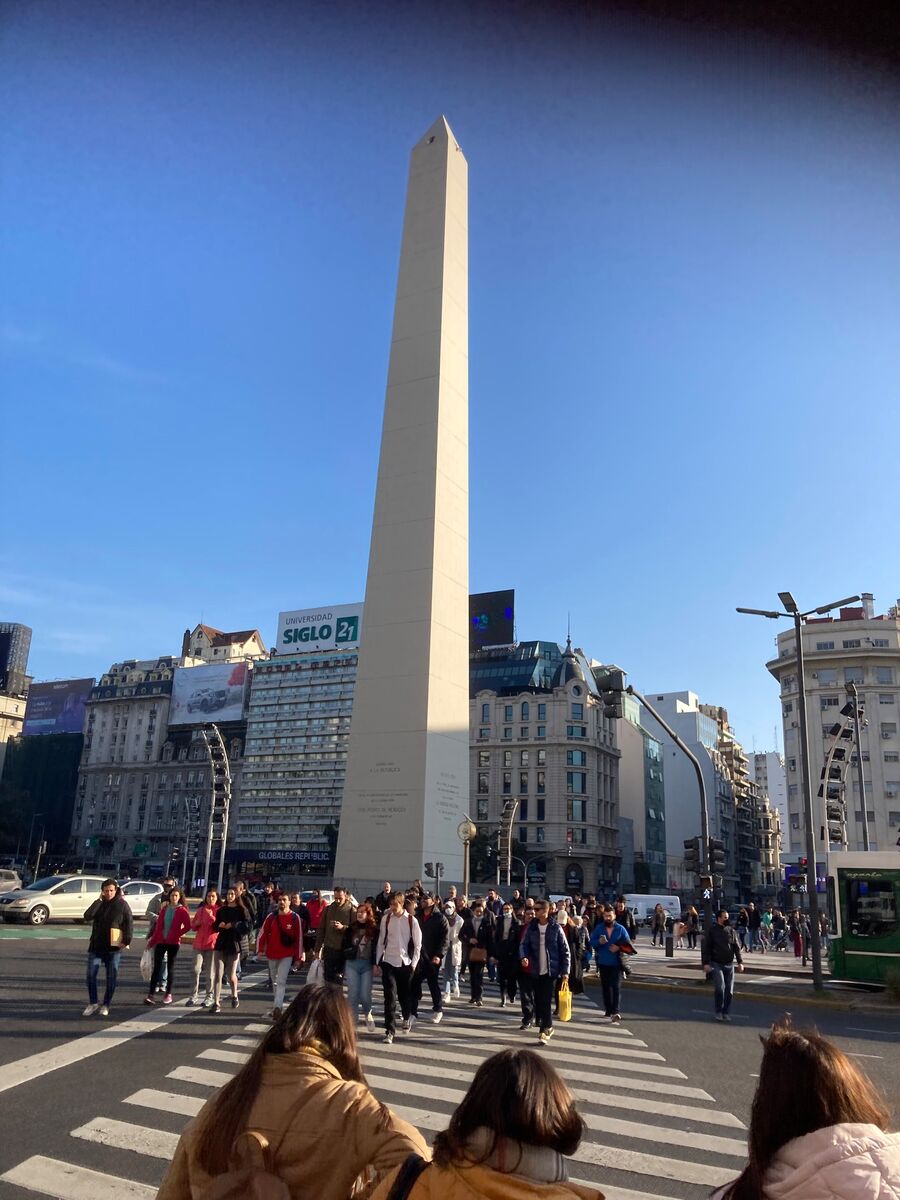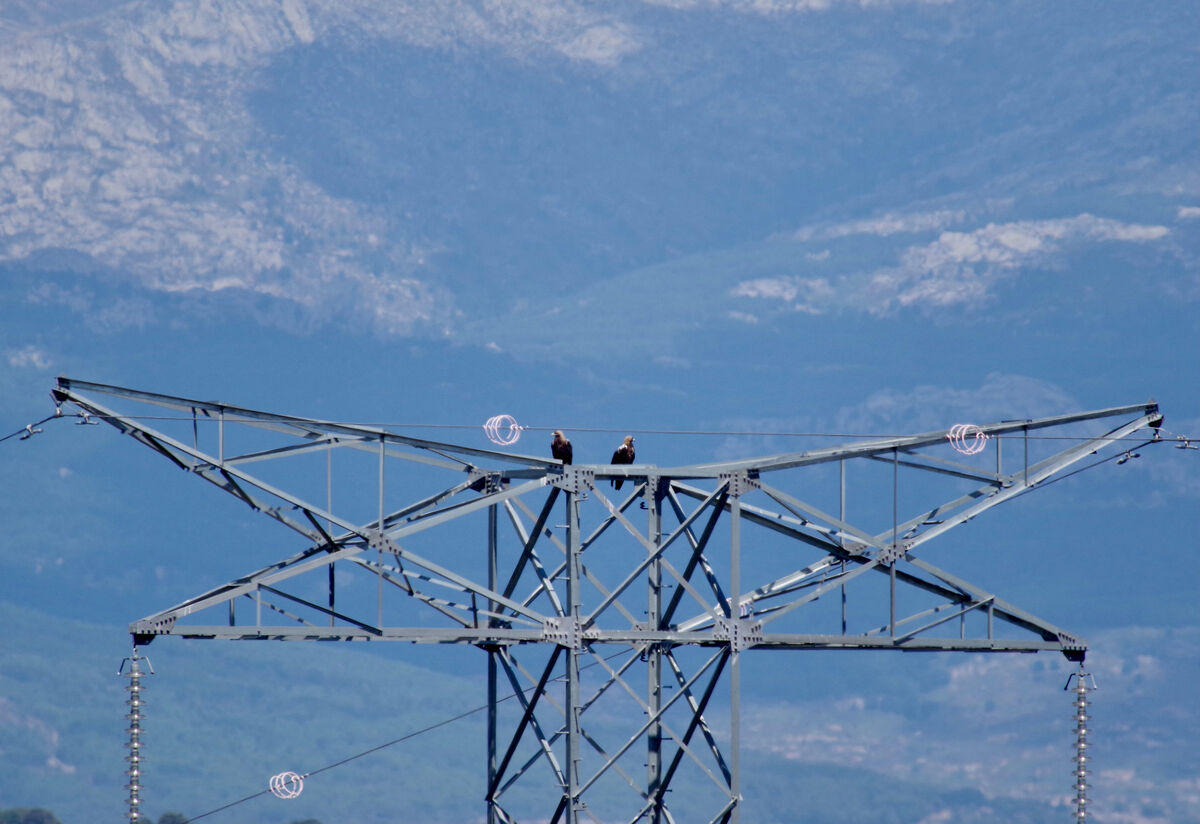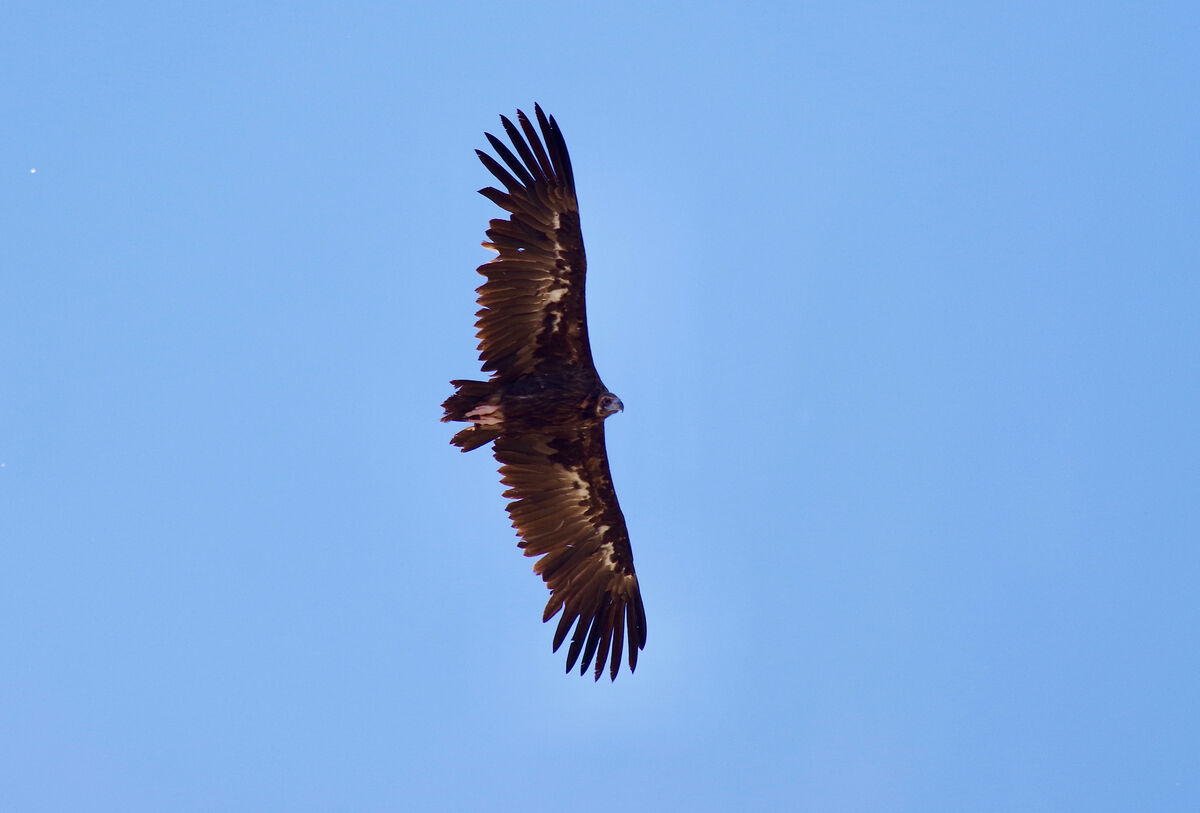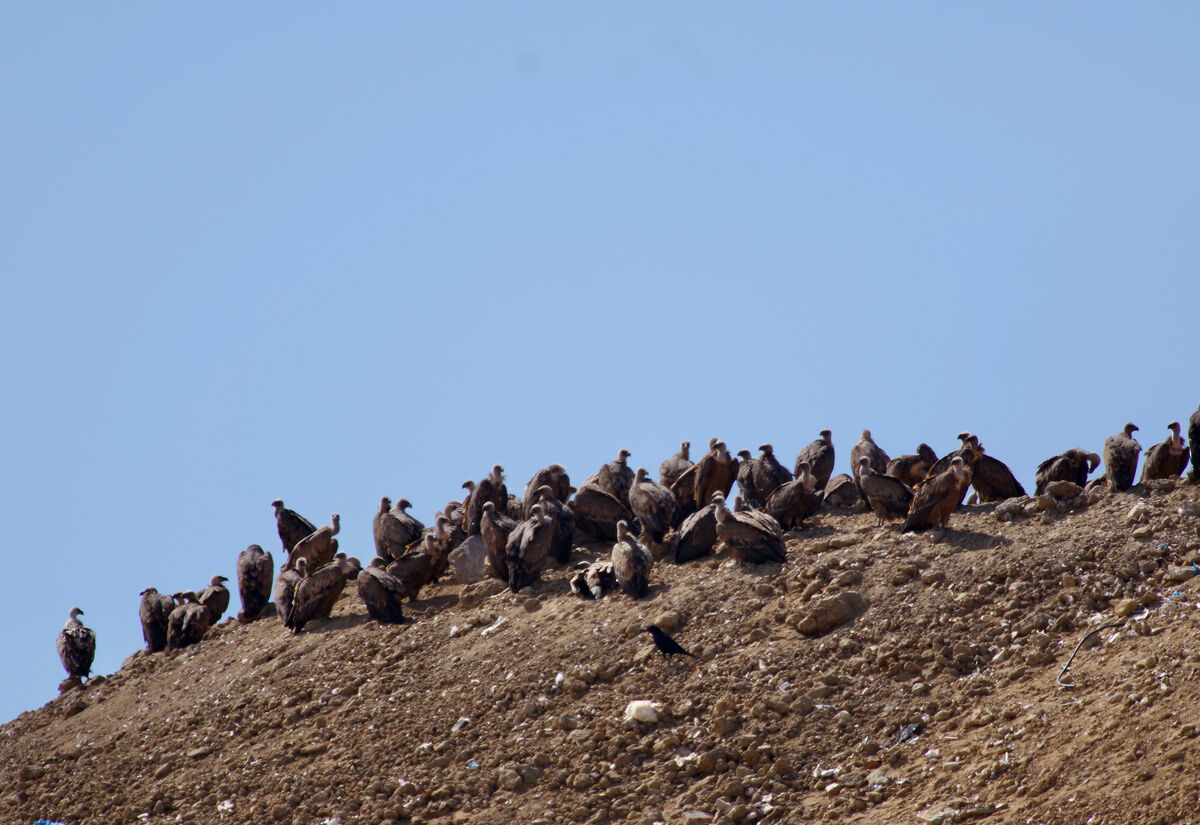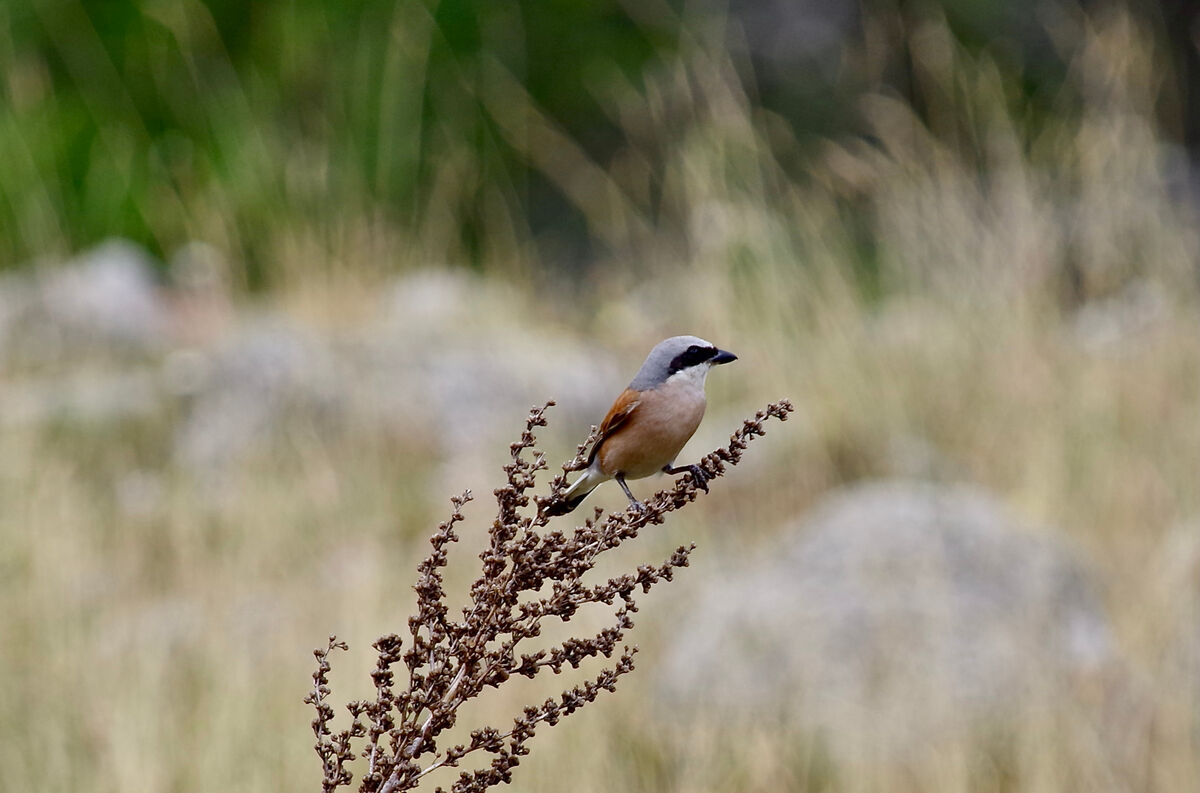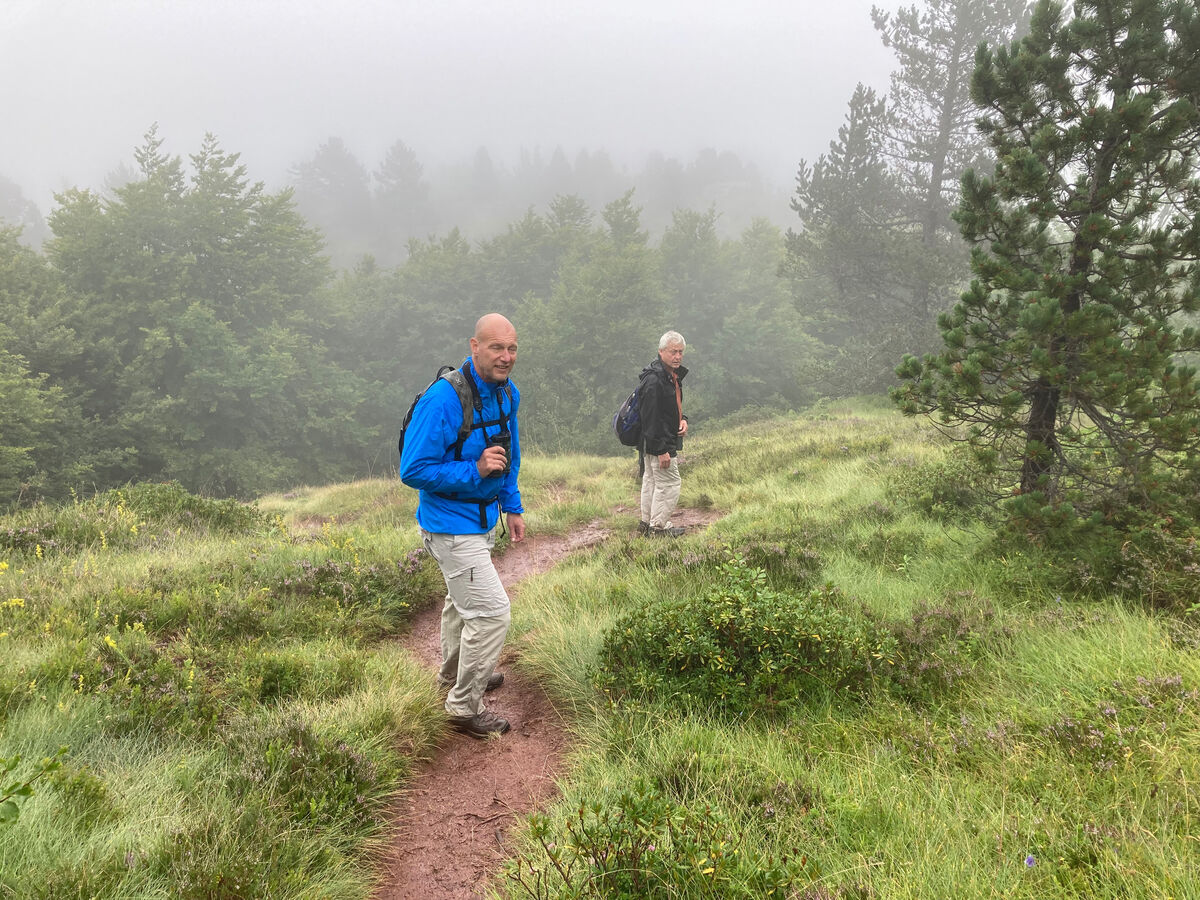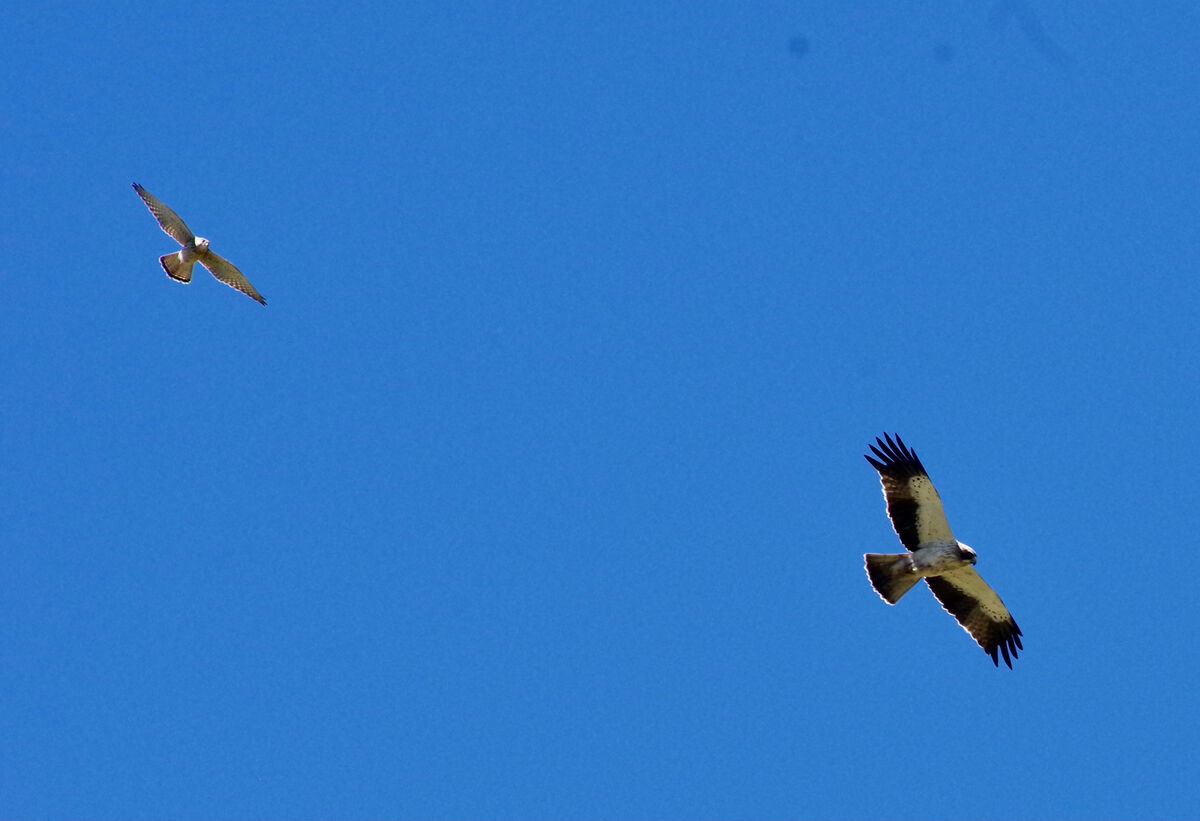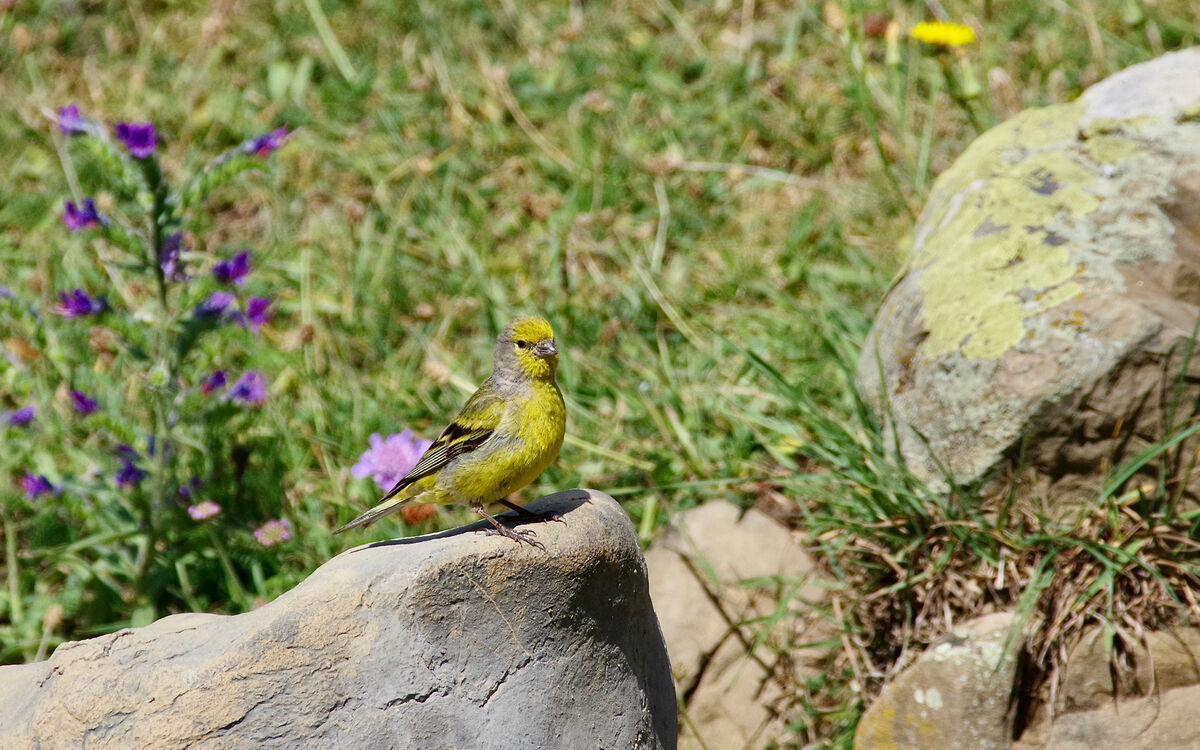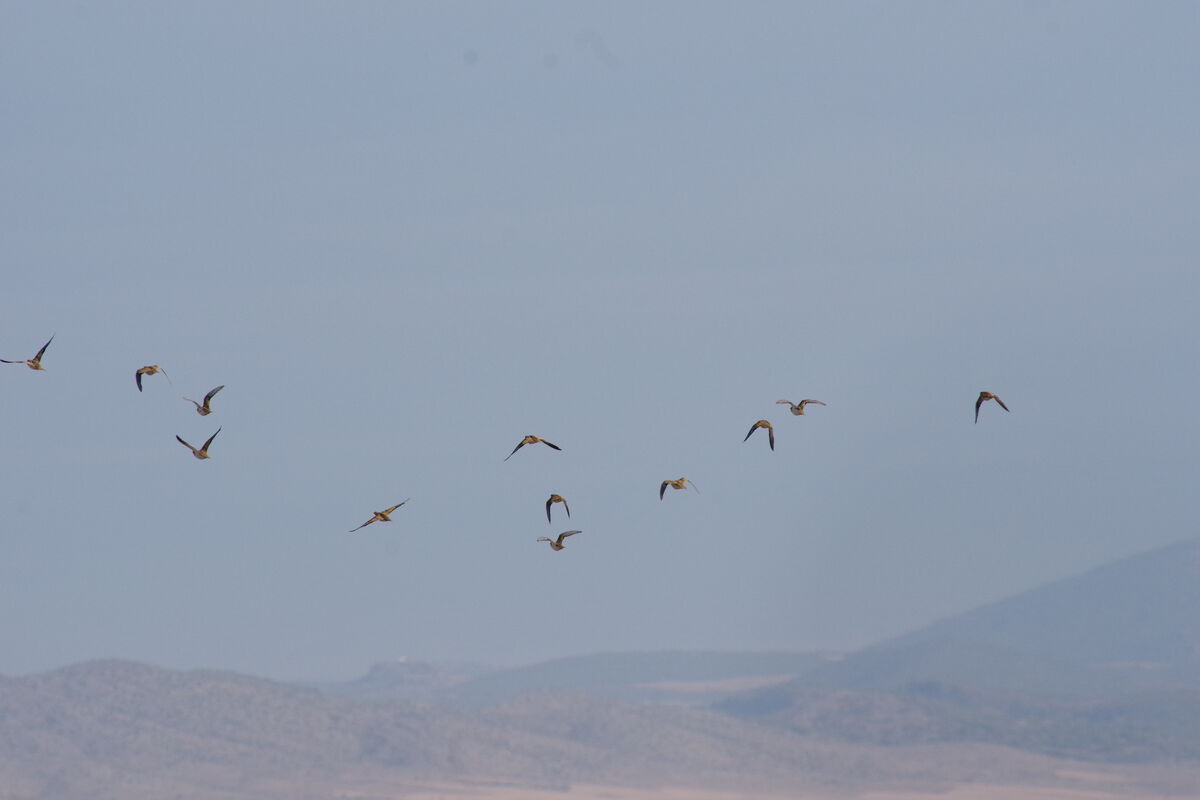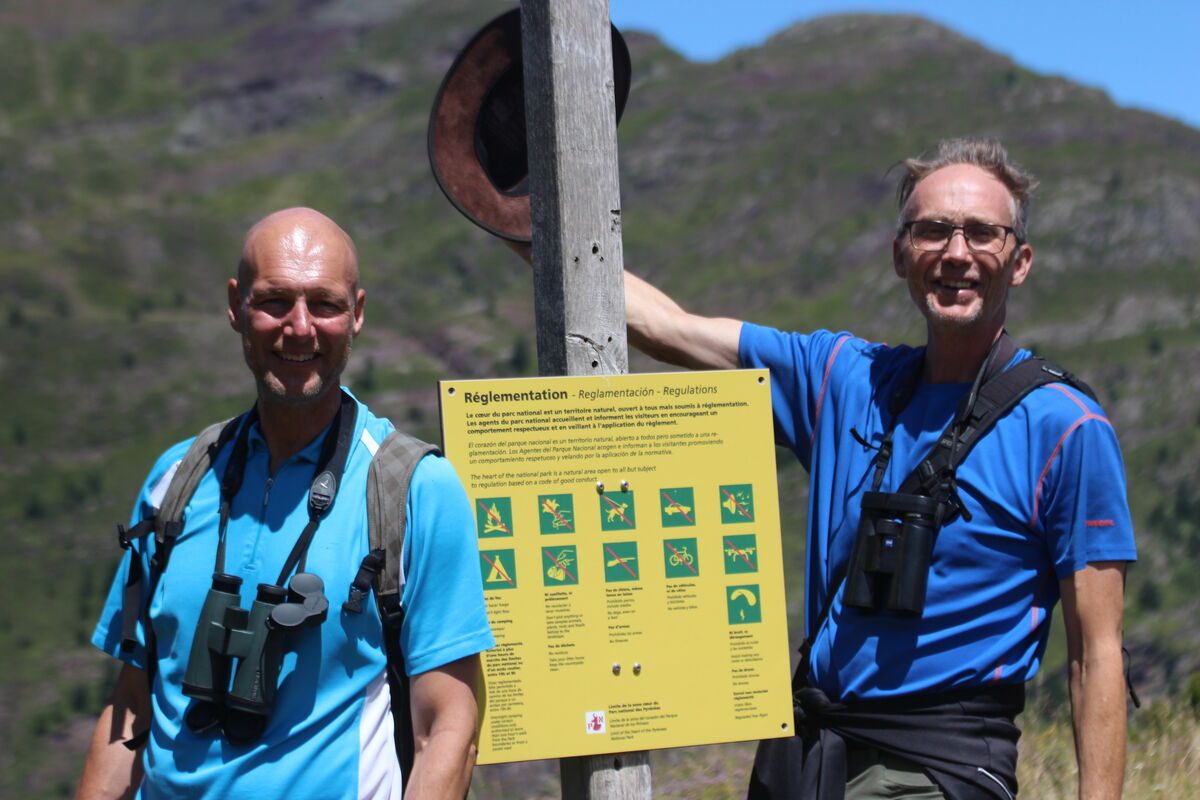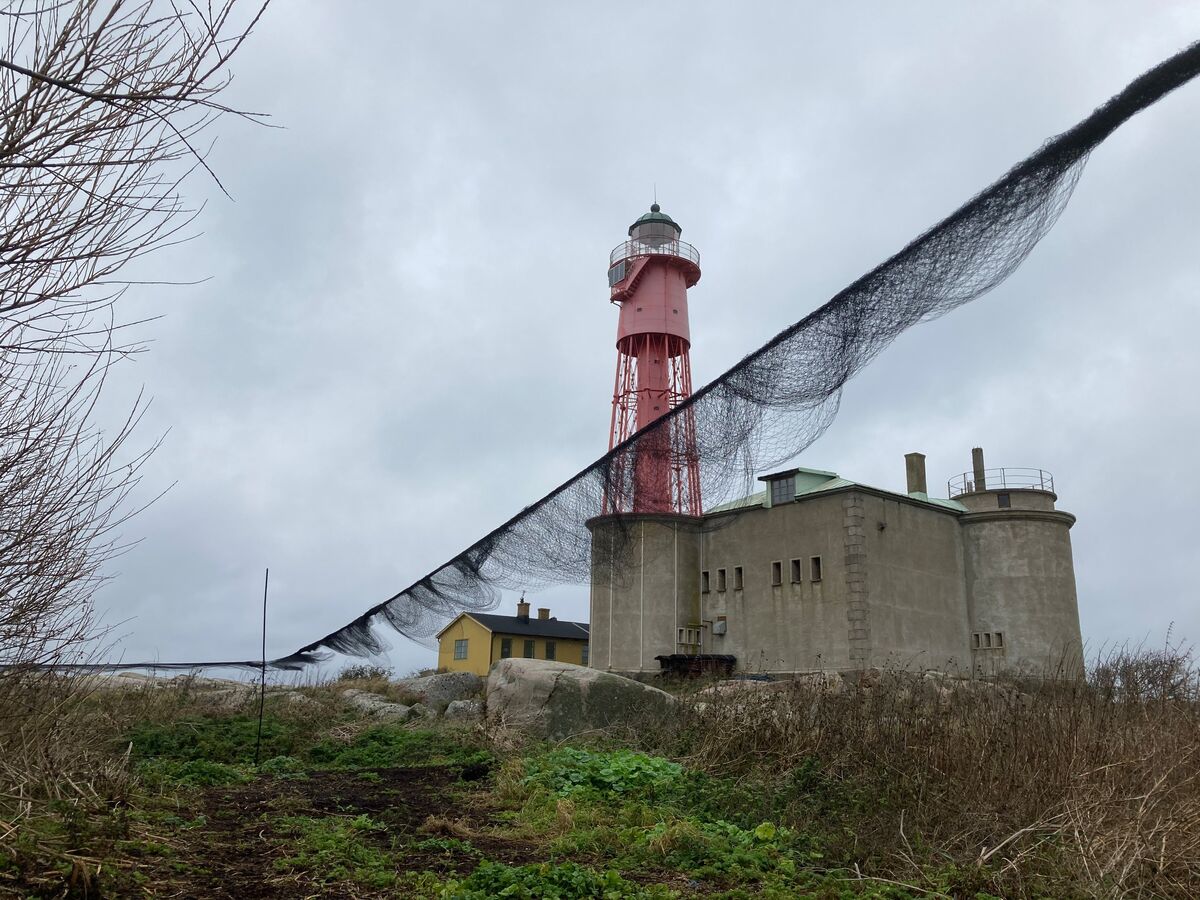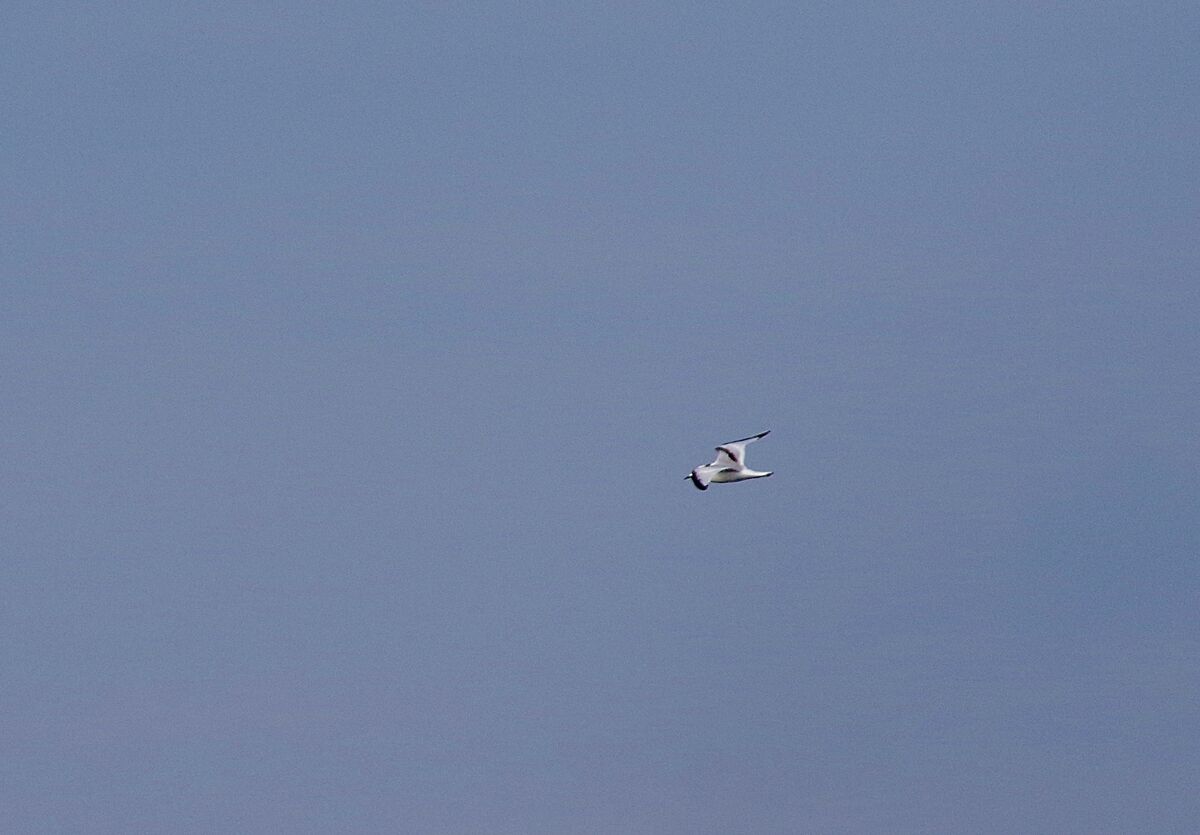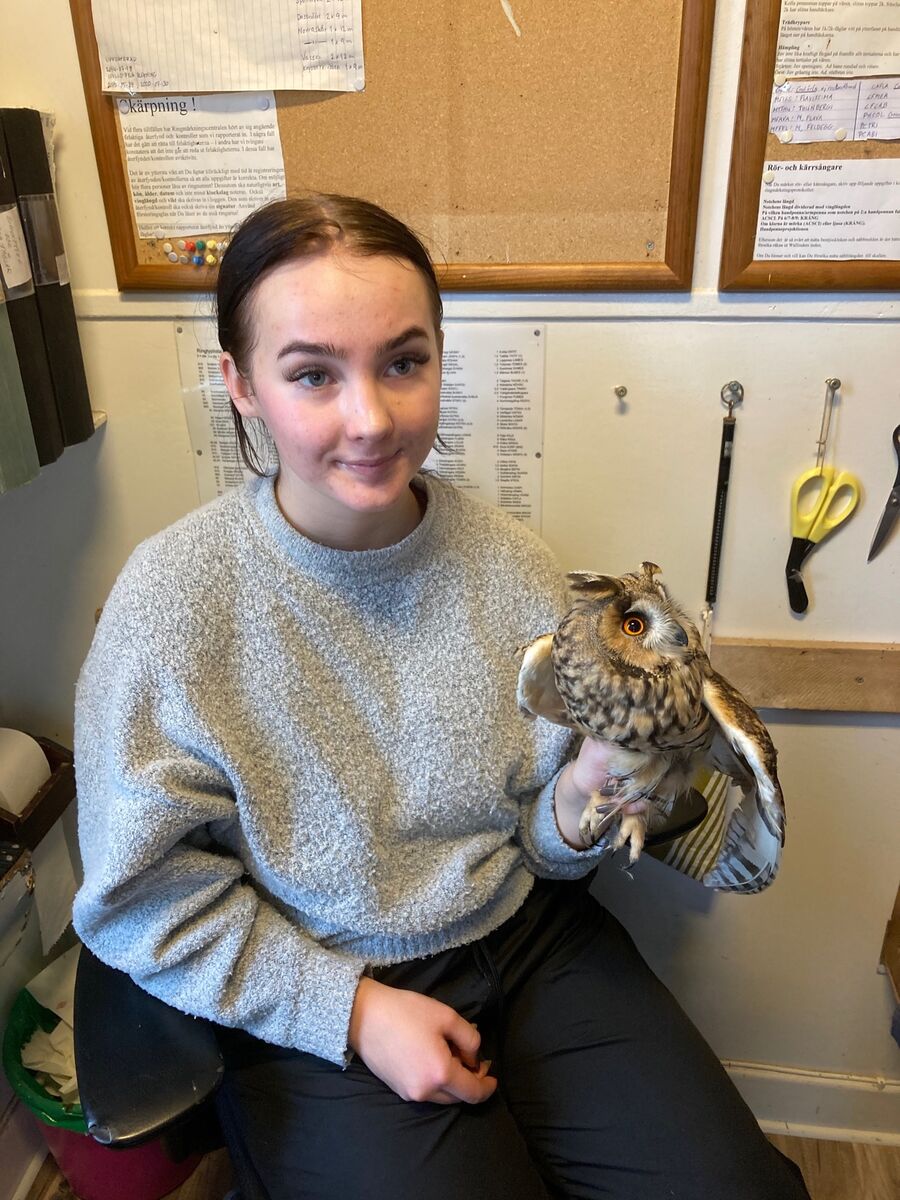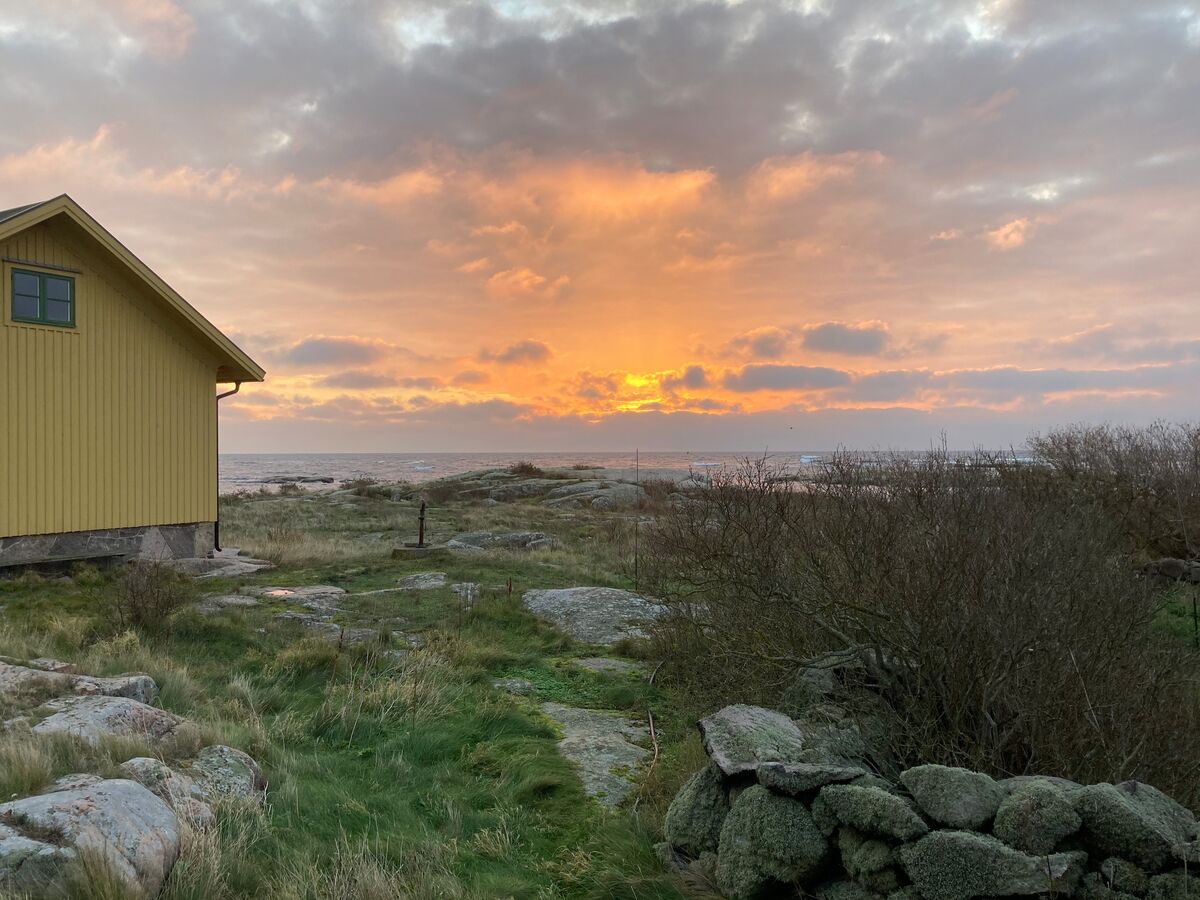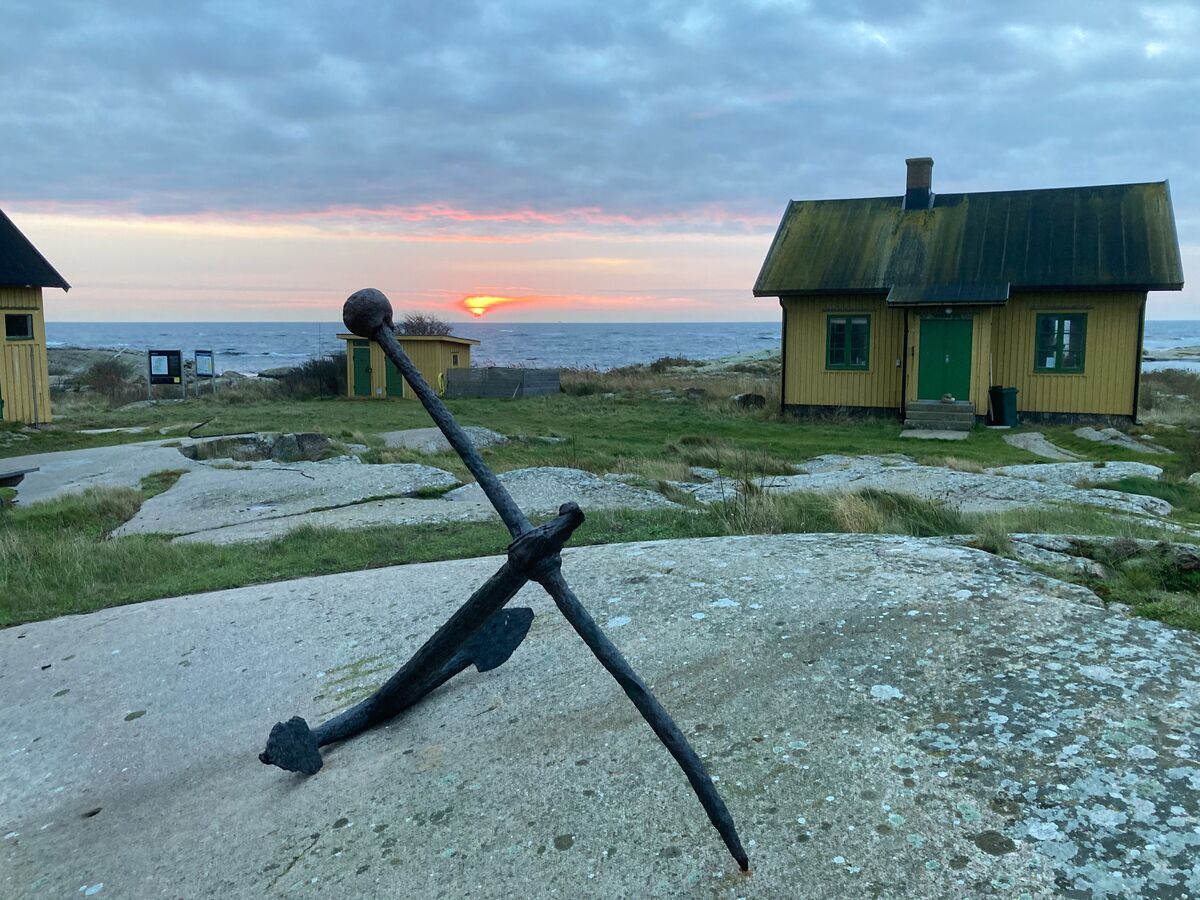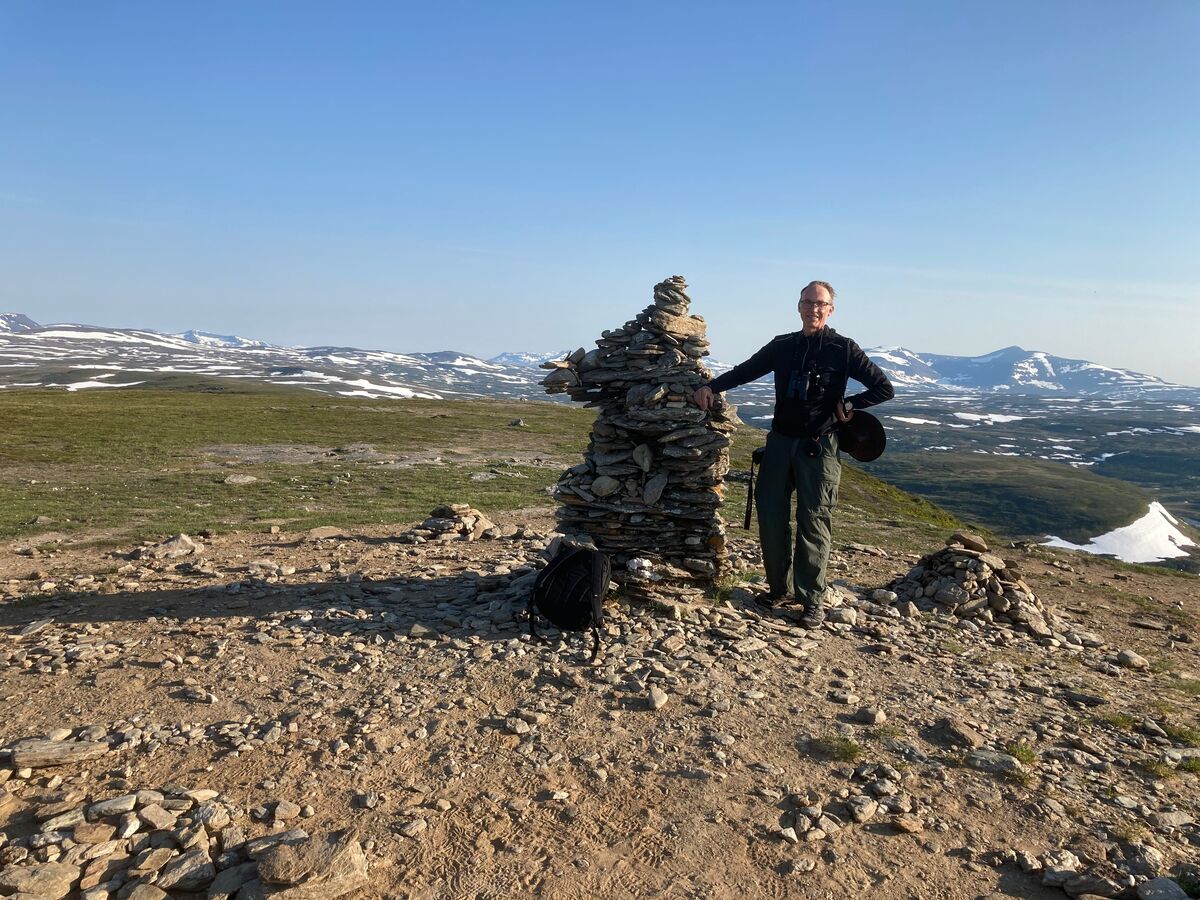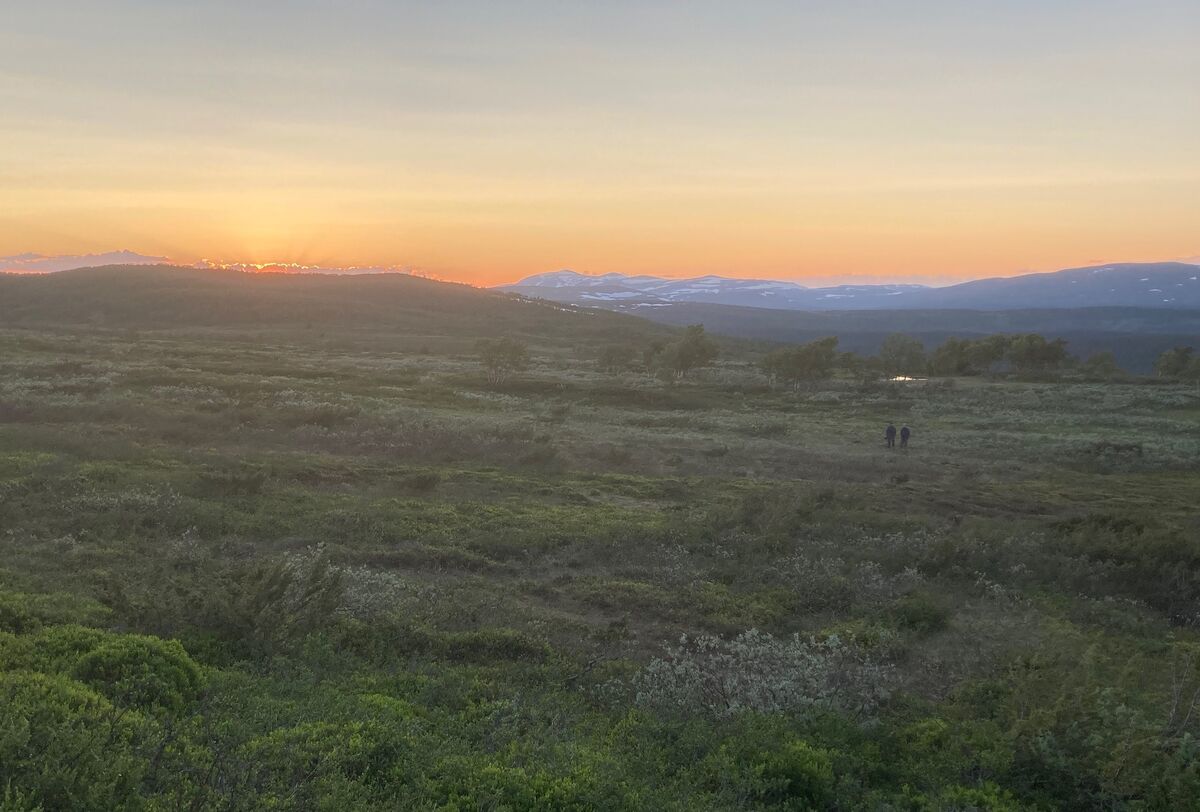Leif Rydell
Argentina part 1 2022, Buenos Aires and Punta Rasa area.
Part 1 (3 days around Punta Rasa and Buenos Aires)
Finally after missing this trip because of Covid, we (my good friends Nick and Per) finally made it. The ticket were bought just before outbreak of Covid and now 2,5 years later we flew off. Argentina has for long been on my wishing list. Both because of the high concentration of Shorebirds hard to see elsewhere but also because of its dramatic landscapes. Potentially I could get 18 new Shorebirds! This first part will describe our 3 days in B.A and the areas around Punta Rasa which is a north pointing tip about 340 km south (SE) of Buenos Aires. The area is both at the sea but also som localities a little bit inland. Going there you pass some areas of the famous Pampas. For Swedish people names like Samborombon and Rio de la Plata has a special meaning because of Taube's famous songs. After these first 3 days I had seen 5 new shorebird out of 6 possible. A good start.
We arrived early in the morning July 20th after a long flight from Europe. KLM was a pleasant carrier to use and service was good. Our guide for two days, Diego Gallegos picked us up and off we went. Going south we stopped at a few places when we saw some birds. One of the most handsome birds during the trip was this Long-winged Harrier which showed up a few times these two days.
As we came closer to Punta Rasa we made a few stops, essentially the one at Tuyu-Palenque which is a combined area of drier grasslands and wetter areas with ponds and smaller lakes. Here we saw many birds and especially one of my most sought after species, the Tawny-throated Dotterel. I was quite nervous as this would be our best chance. Our guide Diego Gallegos made his work and found a flock of at least 16 birds, which is a good number. Approaching them by foot for a photo would be almost impossible but as the ground was hard and rather flat we made it by car. One of my top 3 for the trip, what a bird!
At the wetter areas, we saw many new birds. Among these were the handsome Coscoroba Swan, the rather handsome Red Showeler and the tiny but active Sooty Tyrannulet.
One of my target birds was the S. Am. Painted Snipe which is a beautiful but hard bird to see. Very sensitive to water level during non breeding season, we did not make it. Water was to high. Anyway, we saw our first Rufous-chested Dotterels. They were all in some kind of non-breeding plumage but not expected anything else. Later during our trip in Patagonia we saw some more of them and a few on their way to become stunning. We also saw quite a few Southern Screamers and many Crested Caracaras.
Next are two rather strange photos of birds I saw in this area. The one at Many-colored Rush Tyrant was taken in a rush (ha ha) when the setting at the camera wasn't right and the second was at a small flock of Monk Parakeets passing through. It's not a good picture but quite a strange one as I later saw the head and a wing of a Chimango Caracara just behind the flock which gives a "funny" and unusual picture.
As the afternoon came closer we had to turn back towards our hotel in General Lavalle we saw some more nice birds as this Burrowing Owl, Bare-faced Ibis, Roseate Spoonbill and several Red-fronted Coots. We checked in and had our first evening by the dinner table with some good local wine and many laughs. Good to be on a tour again.
Next day we left the town by driving slowly at the outskirts. We were lucky to see a few Plumbeous Rails feeding at the edge of some ditches next to the road. Not a very secretive bird (compared to the ones in Europe) we managed to come pretty close.
The journey continued slowly towards Punta Rasa ( it's a tip pointing north by the coast). Here usually some interesting birds winter every year. I must say we were lucky as we had nice and close looks at several shorebirds I wasn't sure to at all. Shorebird bonanza as follows; Hudsonian Godwit, Red Knot (a decently common bird in Sweden), Two-banded Plover both in breeding and non breeding plumage and the strange looking Snowy Sheatbill. This species is now considered to belong to the shorebird family. 3 new shorebirds in just a few minutes. A strong and big moment for me, wanting to see as many of the shorebirds as possible.
Next to the shorebirds we also found Olrog's Gulls, Brown-hooded Gulls and some Royal terns. Before going, I didn't know who Claes Christan Olrog was but Diego told us he is called the founder of Argentinian field ornithology . He was actually a swede who lived and worked most of his life in Argentina. He wrote the first field guide and has given name to many birds including this gull.
These are the happy guys, Nick (middle) and Per (right), (me missing) and our excellent guide Diego Gallegos (left) after seeing all the awesome shorebirds and other species adjacent to the shore. You can see the Sheatbills to the left just by the shore line.
After a 3 hours drive back, Diego dropped us at our hotel in the centre of Buenos Aires. Next day we took a walk down to Reserva Ecologica Costanera Sur. This is a fantastic oasis more or less in the centre of the town next to the famous Rip de la Plata. To walk around this site takes 2-4 hours depending on speed when birding. It has a massive list of 352 species. Walking on our own we spotted quite a few birds among them these; Picazuro Pigeon, Grayish Baywing and the common Patagonian Mockingbird.
As we walked many other species appeared of which some were kind enough to let me have a pic. The following are Cattle Tyrant, Red-crested Cardinal and Rufous-bellied Thrush, all rather common.
My absolute favorite group of birds are the shorebirds but I also have a weakness for warblers and other smaller passarines. Her yo can see the Tropical Parula, the handsome Masked Gnatcatcher and the simply , but still beautifully patterned S. Beardless Tyrannulet.
As we left the reserve we stopped close to Nick's favorite ??!! bird, the Rufous Hornero. You can see it here but also Nick enjoying its presence and filming it with his phone.
The last pictures from this part of the trip are me and Nick at the reserve with the city skyline behind and two pics from the centre of the town which is supposed to have around 12 million people.
Next; the north west and the Andes!
Central Spain and the Pyrenees.
After a year and a half break from travel, because of Covid, myself and two friends (Per and Nick) made a 8 day trip to Spain. Purpose for me was to see as many of the birds missing on my list for this area and of course to again do a birding trip with some friends. Early August is in many ways a slow period and some birds are not easy to track down. Missing on my list were Great Bustard, Black (Cinereous) Vulture, Spanish Imperial Eagle, Dupont's Lark, Wallcreeper, Iberian Green Woodpecker, Black Wheatear, Rock Sparrow and Citril Finch. We arrived with an afternoon flight to Madrid, rented our car (a Opel Mocca which was a disappointment both in size and comfort) and made it to our local hotel. First thing next morning we were on the road towards NE. Our first spot was just outside Madrid itself and we spoted our first group of 16 Great Bustards on a field next to the road. The Road was narrow and we couldn't stop directly. After we had parked a few hundred meters further we went back, but at that time they have moved further out and the pictures were just for memory. A few km more and we stopped at a small village and took a walk. Our first Short-toed Eagle was nicely perched in a tree and I got my first Rock Sparrows here as well as a small group of Spanish Sparrows and a few larks. A great feeling to be birding abroad again with good friends!
We then continued on smaller roads through local farmlands. Birds were not plentiful and you feel the same experience as in Sweden at this time of the year, with no song and breeding activity. Birds seen in fewer numbers were Red-legged Partridge, more Larks (Crested) and Woodchat Shrike. We then drove towards Mirador de Valdelanagar, were a local birder had given me location for the Imperial Eagle. Last part was on a pretty rough road but when we got there, the reward was stunning. A pair sitting on a big electric pole (quite far away) but easily recognizes through a scope. They also made a few displaying flights to our great joy. Here we also saw Red-rumped Swallow, more Rock Sparrows.
We now headed for our hotel in the very beautiful town of Miraflor de la Sierra but on the way we passed the dumping spot at Colmenar Viejo which showed to be a real highlight. At the top of the spot more than hundred Griffon Vultures and at least 15 Cinereous (Black) Vultures were seen, either in flight or on the ground. Her also a giant roosting area for White Storks.
As we arrived to our hotel we checked in and started to drove up the mountain for an afternoon there. On our way towards the top, Per realized he had forgotten his bins at the toilet in McDonalds where we had a brief lunch! Quick turn and back. The lucky star was ons Per's side and they were still there, at the toilet though almost 3 hours had gone!! We still had time for a drive up to the local mountain to look for some local specialties. We had great views of a flock of Iberian Magpies, close views of Griffon Vultures among others. This Greater Whitethroat gave us some confusions before we came close enough to see.

A short coffee and ice-cream stop at a narrow pavement in an unnamed small village.
Next morning we headed east and our first stop was at lake Embalze de Pedrezuela. We had views of some raptors and the trips only Bonelli's Eagle (juv) was seen. Here we also had several good views of Melodious Warblers and this juvenile Subalpine Warbler, with which we certainly needed help to decide what species it was. We continued further east and reached the area around lake . on the way we made a stop at small village with an old fort, where Dupont's Lark could be possible. We saw a few more Larks, Short-toed and Thekla but no Dupont's. Later in the afternoon we reached Laguna de Gallocanta which has a big list of birds. Not at this time though and we decided not to drive all the way to the shore. We had some nice views right at the information board, namely the only Black-eared Wheatear of the trip and a couple of (juv/ female) Cirl Buntings on a field. Night in the cosy village of Tornos, where we had a well deserved beer (or two) before crashing into our beds.

Nick and Per enjoying a well deserved beer and putting down todays records in the evening at Tornos square.
Next morning we went back to the lake areas and we saw more than 10 Montague's Harriers, a new flock of Great Bustards and one Black-bellied Sandgrouse. Unfortunately it disappeared when we walked towards it and I was the only one to see it. Happily we saw this species later on during our trip.
Our journey now continued north towards the Pyrenees.
Next stop was Reserva de El Planeron, which is one of the most "famous" spots for this elusive species but no luck here either. Definitely wrong time of the year. We had splendid views of Thick-knees and Western Bonelli Warbler which cheered both Nick and Per (and me though no new birds for me) up. We then drove up to Huesca where we tried for Scops Owl without luck and had a nice meal at the plaza.
Next morning, target Black Wheatear which I had been given a trustful spot for. When reaching the castle area of Castillo de Montearagon we realized that the road was closed the last part but I made a chance of asking one of the workers if we could just go to the top and not at all to the castle area and he said we should be fine. Up here it certainly took a while before I found it, but I eventually it happened! On the way down we had our first sighting of the Iberian Green WP which made me shout straight out as it flew past the car. It landed close so everybody got a decent look. Other good birds here was Blue Rock Thrush and a group of Bee-eaters. All birds were seen at distance so no pics from this spot.
Later we started our trip towards the Pyrenees and our fantastic hotel Uson right at the best spot. Before evening we had time for a shorter walk at the local valley where we spotted a few birds we also see at home like the Red-backed Shrike and the (White-throated)Dipper. We then had nice evening with splendid food (and a beer or two)!

Stunning and fantastic hotel Uson.
Today we headed towards the ski resort area Astun next to the French border. Weather was not good at all with some rain and fog. We didn't see much but as the clouds lost their total impact we saw two Bearded Vultures (Lammergeir) circling around a peak.

Me at the French border in foggy weather.
Next day we went back to Astun and took a ski lift to the top. Wind was very strong but we pulled ourselves to a top and down to a valley. Not many birds but a flock of Red-billed Choughs were playing around and a few Water Pipits as well. Northern Wheatear was the most common bird here and seen frequently on the slopes. We made an attempt to the other side of the ski resort where some reports had been made earlier in the summer. Not much here except also a family of Alpine Choughs and an Alpine Marmot which gave a strong alarm call.
Except for seeing Bearded Vulture every day here we also had frequent sightings of Kestrel and Booted Eagle. Here a pic with both for size comparison.
Last day here was the best as we decided to climb the local peak close to our hotel. A narrow and in places steep trail made me take the decision to not go all the way. My knee was hurting a lot and was not stabile. Per and Nick continued and managed to see some good birds. I wasn't disappointed though as I had a nice flock of Citril Finches down at the fields next to a rest house/ café. Sorry for my friends they were gone when they returned.
We went back south towards Zaragoza where we stayed at a roadside hotel on the south side. A strange place with a"special" garden. It was very hot, over 30 at 10 p.m. Purpose of this hotel was to be close to an area where there had been several reports of Larks and Sandgrouses. As we went out in this habitat we quite quickly started to see many larks. Very erratic and nervous in behavior, we had problems with seeing them good enough. Thekla Larks where plentiful but after a while we came close enough to put the last one on the list, the Lesser Short-toed Lark. While standing here, I heard a sound which in some way was familiar. For sure a flock of Pin-tailed Sandgrouses were seen but in quite a distance though. Luckily I saw where they went down and we drove on a small track a finally and found them on a field. Could not come close enough for a decent photo but easily recognized in the scope. Talk about lucky minutes, a flock of Black-bellied Sandgrouses also came by but these were only seen in flight. A simple brunch was taken in a local village and this place will be in my memory for quite a while as about 20 old men where having a party with lots of alcohol at 11 a.m.
Last evening was spent at a nice airport hotel and the next morning we said goodbye to each other. A great trip and splendid time with good friends. I saw 7 out of 9 possible new birds which is ok, taking in the matter of timing of the year. Both Dupont's and Wallcreeper are well known to be very hard at this time of the year but the view and the memory of the Pyrenees is clear as a blue sky. Last picture was sent to me from Nick at one of many joyful moments.
Looking forward to next adventure!
Utklippan Ringing Station late October 2020.
It has been 4 years since I last visited this hidden paradise. I used to come here every year during the 90s and first decade 0f 2000. I have so many great moments, both when it comes to birds and friendship. I have spent more than 160 nights here at this rustic but well preserved old lighthouse. Back in time the staff and their families lived here as they had to take care of the permanent light. Nowadays, this has naturally changed and it's all automatic. This year I again had the opportunity and my daughter, now 19, wanted to come along as she also has great memories being here when she was younger. My close friend Nick (you have seen him on pictures from other trips) also came along for the first time and also first time being part of the ringing activity.
The weather this week was quite windy but still not so bad that we couldn't have the nets up. The first 5 days we ringed about 50-150 birds each day. At this time different types of finches dominate, like Redpoll, Twite, Linnet and a few Bramblings and Siskins. The last days were really good and we made a new recored of 430 Redpolls in one day!! A great surprise among these was an Arctic Redpoll (unfortunately now lumped with the Redpoll).
Being on this great island also includes looking for migrating birds like Geese, Ducks and Gulls. A previous group banded this juvenile Greater White-fronted Goose. Quite uncommon in the Baltic Sea is the Black-legged Kittiwake but this year a few passed one day (distant photo).
Having Shorebirds as my favorite group of birds, some close encounters with a bunch of Purple Sandpipers was a big highlight of the trip. The pic with water splashing is not sharp (if it had been it would have been a great photo, I guess) but never the less a bird not very easy to come up close to.
A few warblers were ringed, mostly Chiff Chaffs and among them an easter Sub-species of Tristis. See the difference in color of the back, greenish in Colybita and Grey in Tristis.
One day, in the middle of the day, an owl just crossed my eyes around the corner of one of the houses. What was it, wasn't that a Barn Owl? Yes it was!! It flew in to one of the windows sections to the light house where we later found it again and took this photo. The first record for a living one ever on this island (one found dead by the lighthouse many years ago). This one of the eastern sub-species Guttata. WE tried to put up some extra nets but never succeeded. The next morning it was gone.
Otherwise when it comes to owls, many migrate through this island at this time of the year. Most of them are Long-eared Owls but a few of them are Short-eared Owls. They differs in behavior, Long-eard likes to seek shelter in trees and bushes where the nets are and Short-ears seek for shelter between rocks or more open placed "holes". Therefor Short-ears are seldom captured.
Here some nice pics of these great birds.
The last day, just before leaving we discovered this White Wagtail. Looks very much like a female Yarelli but could perhaps be a hybrid.
Finally some pics showing the beauty of this island. It's possible to go here during summer as a tourist as there are boat taxis and a café here at this time. For now.
Öland August 1-3, 2020
For a few days , I visited Öland in early August. Purpose was to go away a few day with my wife as Corona had spoiled all other plans. We stayed at my friend Tommy's house just at the southern part of the island. The house has a stunning setting with views of the Baltic Sea and traditional farming country. Obviously we spent some time not birding but as this time happens when the waders are starting their migration, I still had the chance to see some nice birds. Seby is one of my favorite places on this island as it often gives good views of some shorebirds. The majority of them, as usual, Dunlins.
Among all the Dunlins and a few Common Ringed Plovers I was a little bit fortune to see both a few Curlew Sandpipers and a single Little Stint, both great birds for me who lives inland.
A few moments later, still at Seby, I saw a few more good species. The Ruddy Turnstone is a local specialty and this single Sanderling, a wader that's not uncommon during migration, but never shows up in big numbers as at other places around the world.
All birders in Sweden has visited Öland and to spend some hours at the absolute tip, is in all itineraries. There is a famous light house here, Långe Jan (Tall Jan) and beside it you can see some birds related to the shore and also lots of migration. Beside the light house, also a Black-headed Gull, an Arctic Tern and a surprising (sick?) Black Guillemot.
Just a few hundred meters north of the light house there are some lovely areas of forest where you in spring time will find many warblers, flycatchers and other passerines. Not many songs or calls at this time of the year but still some good birds at close range, here a juvenile Red-backed Shrike and the awesome Wryneck.
Thanks for this, a few days of birding in great Swedish birding country.
3 days northern Härjedalen June 2020
As restrictions concerning Covid 19 had been changed a bit, me and my two friends Claes and Per decided to take a 4 days/ nights trip up to northern Härjedalen. Per has an apartment in Ramundberget so it was easy to organize day trips from here. Day trips may not be the correct word as you need to be in the field very early and very late because of the position of the sun at this time of the year. We started our first day at 03.00 and drove to Mittåkäppen. This mountain is a "famous!" and a popular spot for hiking. The first section is bush and lower trees where you find some typical birds like Brambling, Redpoll, Willow Warbler and at the edge between forest and the "tree boundary", Bluethroat. We had to walk through some snow but it was a great experience as it was very warm and birds were singing all around. We had 5-6 Ring Ouzels here on the way up to the top but I never got close enough for a decent pic.
Our first stop was just before the parking where this beautiful lake is and here we saw a group of Willow Ptarmigans.
I was surprised to see and hear so many Reed Sparrows here (as they are quite common around the lakes and reed where I live). Here the seem to like a more forest like habitat not necessary with a lake and reeds.
At the top we had hoped for Horned Lark and Dotterel but none were to be found. Still a very nice walk and superb views of the Swedish mountains. Me at the top.
The next day we wanted to go to Flatruet which is the most southern road in Sweden that goes strait over a (flat) mountain top. This place is famous among birders to be a very good spot and also with easy access.
You are allowed to walk in some areas here and the reward is some true star birds of this habitat. The most common one is the Meadow Pipit but close by we found several Lapland Buntings.
There are a few small lakes here that normally attracts one of my favorite birds, the Red-necked Phalarope. This year only one pair with a young were found.
Close to this small pond a pair of magnificent Long-tailed Skuas had their nest. The male had a favorite stone where it returned after every hunt. To see see this star bird with the mountains in the back is a true privilege.
On my walk back to the car I bumped in to a single female Rock Ptarmigan which was having a drink in a small creek.
As shore birds are my favorite group of birds I also enjoyed the quite common Wood Sandpiper, which breed with several pairs here as well as the very cute Dotterel.
We came back later in the evening to listen for Great Snipe. Usually not a well known place for this species but this year there had been quite a few reports. We arrived around 10 pm and stayed until midnight. I was not any wind and we heard 7!! different males but never got our eyes on one. Still a fabulous way to end this day.
The next day we ended our trip by doing some walk along the river (lower down) to see if we could catch up something more. This area had lots of the stunning Bluethroat and also several pairs of Yellow Wagtail. I also managed to have a quick swim in the cold water of this beautiful spot.
Sweden is a stunning and great place!!


